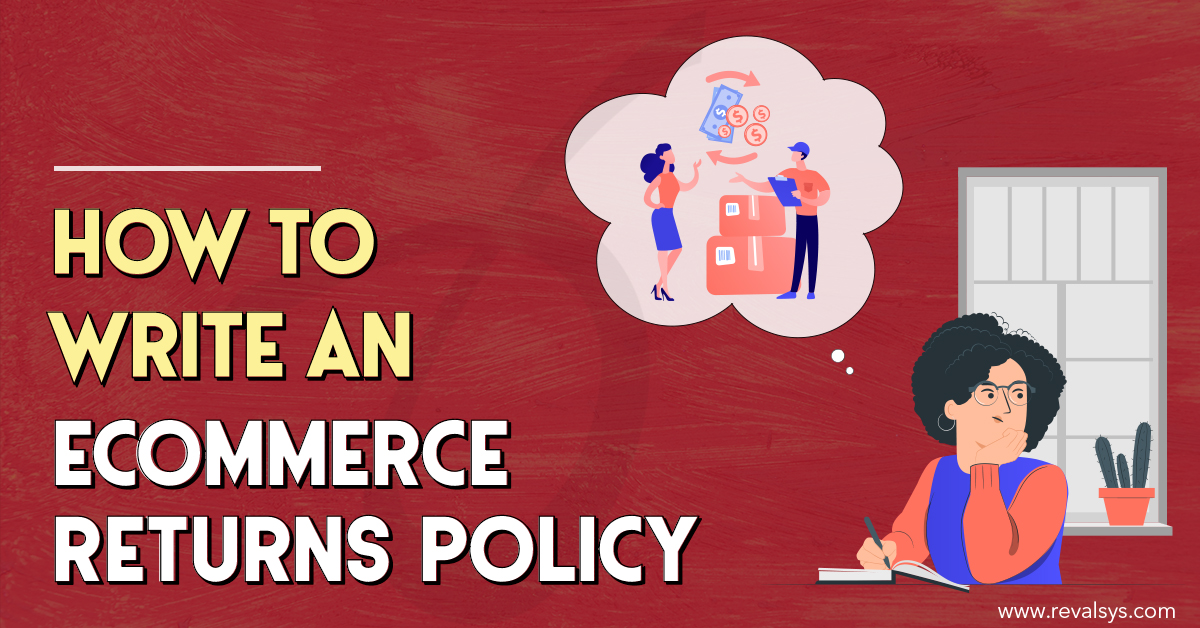
Why Have An Ecommerce Returns Policy?
Product returns are very common in ecommerce. There are multiple reasons why customers return products – it could be because the products are of the wrong size/color/quantity, or simply because customers are not satisfied with them.
In order to ensure customer satisfaction, you must provide them with a good service experience at every step of their shopping process – even when they are dissatisfied. Your returns policy plays a very important role here. Your customers will check the policy before shopping with you and will cease to make purchases if the policy is not flexible. Since your customers won’t be able to try your products before purchasing them, you should enable them to return the products in case they are not satisfied with them.
What To Include In An Ecommerce Returns Policy?
Items That Are Eligible For Return
Knowing which of your products are returnable simplifies the shopping process for your customers. A lot of brands don’t allow for items like perishable goods and clothes to be returned. If you have any such conditions for your brand, state them clearly in your returns policy.
Expected Refund
Let your customers know if they will be refunded for the returned products. Tell them if they will be refunded in full or only partly. Also, mention the time period in which they can expect their refund.
Required Condition For Returned Products
Specify the following in the policy:
- If the items must be unused
- If their tags must be left on
- If their original packaging must be intact
- If they have to be returned along with their receipts
Return Period
Set a time limit for your customers to return your products. Make it clear in your policy if the period starts on the day your products are shipped or arrive. Not stating the return period in the policy leads to customers sending products back after months or even years, and results in losses for you.
Return Address
Inform your customers if someone from your company will be coming to their location to personally pick up the product to be returned or if customers have to courier it to a particular address. In the latter case mention in your policy the complete address to which customers need to ship the product.
Tips To Write An Ecommerce Returns Policy
Write It In Simple Language
The first and most important step to simplifying the return process for your customers is making your returns policy easy for them to understand. Avoid using complicated legal jargon and too many technical terms in it, and incorporate words that your customers use in their daily lives. Write the policy in the first person so that your customers know that you are referring to them. Ensure that its language is in sync with your brand’s voice.
Don’t Copy It From Other Businesses
You should refrain from copying the returns policy of similar businesses not only to avoid getting into legal trouble with them but also because their policies might not suit your products and services. Plagiarizing the policy also results in you losing your customers. Your policy must adhere to the regulations of its original state or country in terms of the return period, products eligible for a return, etc.
Set A Flexible Timeframe
While it is important to lay down some rules for your customers to return your products, you should also keep their convenience in mind in order to gain their trust. Allow your customers ample time to decide whether they like the product that they purchased. Allow for flexibility in the return period during holidays or in cases where your customers are not available to return products. Most customers expect to be allowed 30 days to return products. For those who cannot return products within that time period, allow an extra two days. A flexible returns policy reduces your product return rate.
